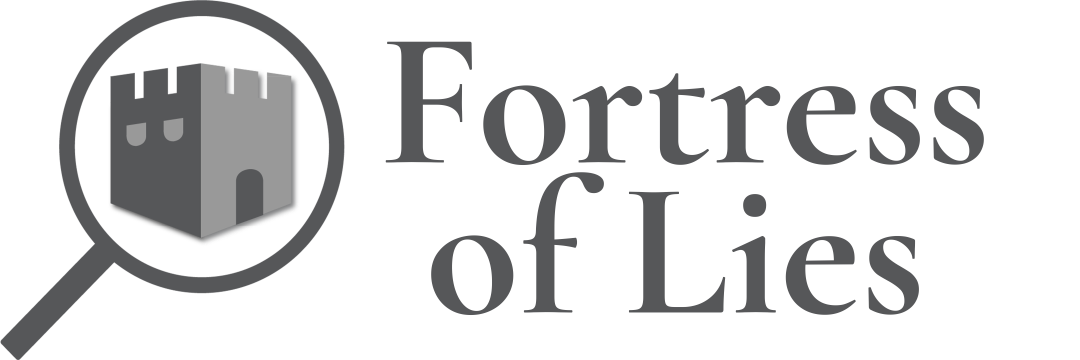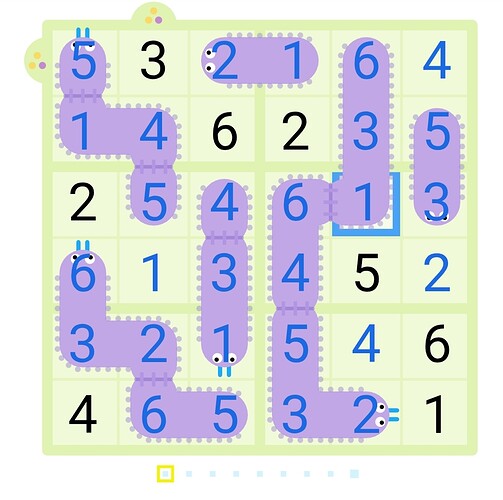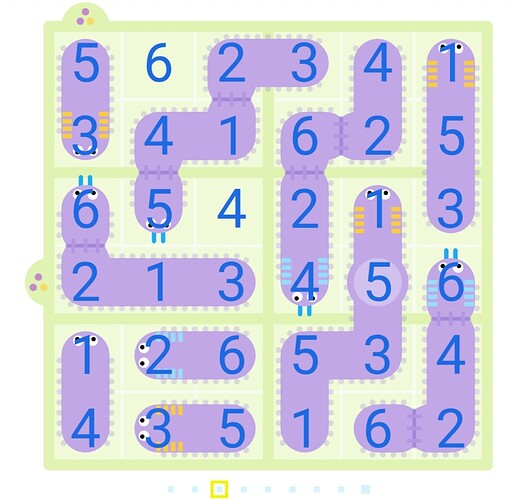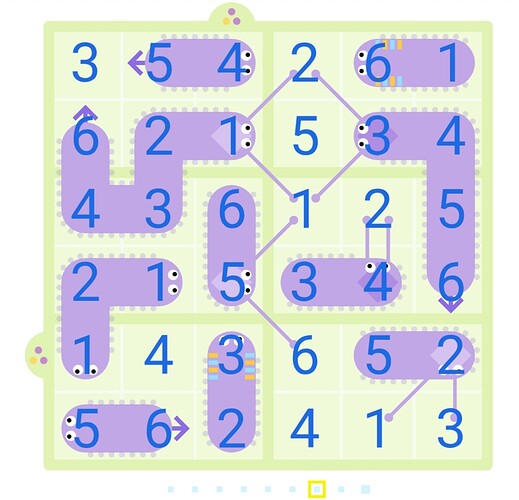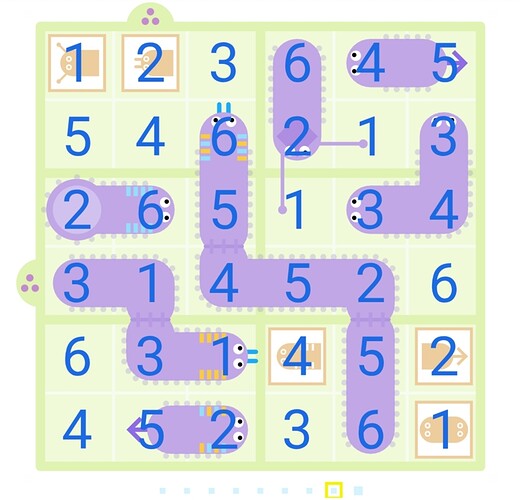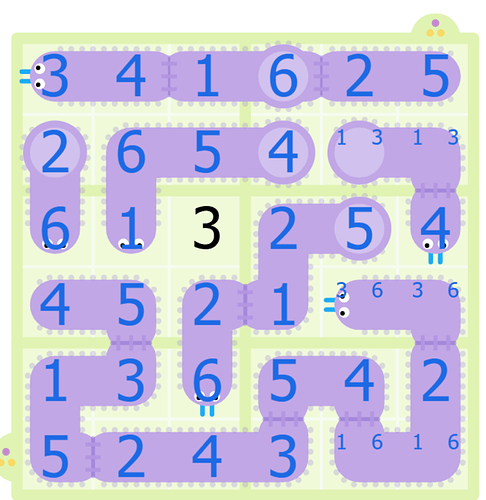B1 | 02:56
Separated by stitches have equal values.
“Something about blue horns.” Not odd/even. (Not length; B2 breaks that idea.)
B2 | 41:55 + 06:41
Circles is not thermo, not reverse thermo, not arrow, can contain [6], not maximum, not total number of circles on board, is not evens. “Circles contain unique numbers” can work, but is not the intended solution. Alternate bifurcation path leads to a dead end. Restart after 30:56.
Gray cut out piece is fog. Not in the mood to think deep. Using backwards logic.
Retraced steps again. Apparently I didn’t use the other path. 10:59
Circle is unique numbers except for [1].
Took an extra run (06:41) to verify claim. Former claim was wrong. Circle represents length of insect.
…something about the blue horns bug me. I can’t seem to find the connections. (Perhaps it is not time yet.) ((That, or it’s decorative.))
B3 | 07:56
Odd/even parity. Got confused for a minute 'cuz I thought insect abdomens act as cages. They don’t. Numbers can repeat in abdomens.
B4 | 21:26
…oh. The insects with blue horns are stitched. That’s all. The odd/even parity affects the entire insect. It took me 12 minutes to understand this. (No negative constraint though, based on prior batches.)
Arrow is not sequence, not greater than, not same parity. Bah, whatever. Bifurcation time.
Took 12 minutes to figure out odd/even parity. Took 7 minutes to solve 99% of the puzzle. Took 2 minutes before giving up figuring out what arrows do.
It looks like they all point to either another arrowed insect or something outside the box, but if such were the case, then the [1,3]-scissor wouldn’t have been resolveable.
…n? Are these numbers… ordered? I uh. I guess that might be a valid answer?
B5 | 08:06
Double-headed insects are palindromes… but is this only for the last head, or for the entire body?
B6 | 17:21
Alternating parity. Got it.
This one took me a while 'cuz I forgot about the R3C6 clue. Then it also took me a couple minutes to understand why R5C4 and R4C4 had to be even numbers. (Answer: 'Cuz of R4.)
B7 | 07:11
Addition and subtraction.
…I’m beginning to see a trend where the odd-numbered batches introduce easier patterns that cost me less than 10 minutes, whereas the difficulty of the even-numbered batches ramp up by dozens of minutes.
I am. not looking forward to the next batch.
B8 | 18:26
Essentially: I cheated. I happened to put in the correct answer for R6C5 and I solved everything afterwards normally.
Without it, I was stuck here:
